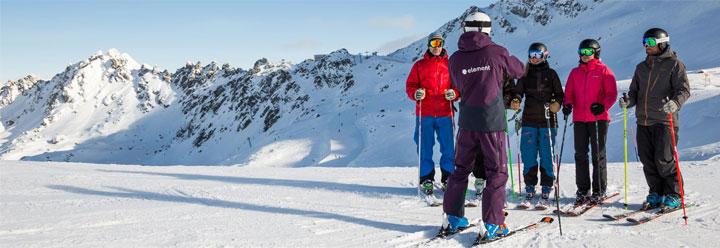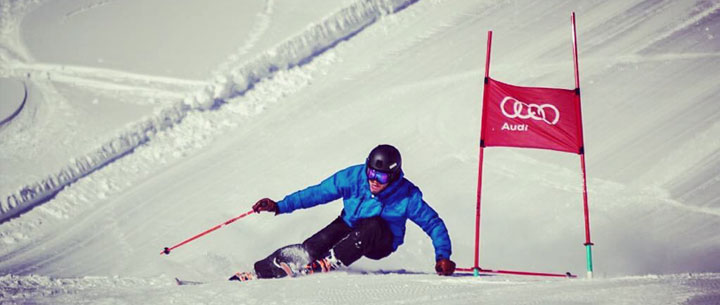ISIA TRAINING HOURS:
HOW SHOULD YOU STRUCTURE YOUR TRAINING?
If you’re planning your ISIA exams, how much training is enough? And how much is not enough?
Training for your ISIA is a big commitment. It’s not something that you can just turn up to and hope to pass.
But how much training should you do? And how do you get that balance right so you don’t end up arriving at your exam underprepared?
Naturally it’s different for everyone and there is no perfect amount. But it needs to be a sustained and part of an organised schedule – just going up occasionally with a friend who’s done the exam won’t really cut it…
So here’s a bit more about how (and why) we structure the Concept team’s training schedule.
How do you start to work it out?

The best plan is to look at the whole season. That’s usually how we start planning the Concept schedule.
Think about the exam dates you might target and work backwards (we always recommend holding off booking until you’ve had a chat to your coach, though).
You’ll need to factor in factor in everything – vital issues like allowing for teaching during peak weeks, creating space for your fitness plan, making sure you get enough time to develop all four strands and crucially including rest days.
So if you’re eying the technical exam in Hintertux, you’re going to want training that runs up to the exam week in April, but starts early enough so you have plenty of time to fix any issues.
Invest time in your preparations and always ask yourself, “am I really doing enough?”
How many weeks should you do?

We all know that we can make changes in a week, but to take your skiing from Level 2 standard to Level 3 in all areas is a big step.
It’s going to require a lot of hours on the hill to make sure you are at and above the standard in all the strands.
OK, if you’re already skiing like Ted Ligety then you won’t need many weeks.
But if you’re battling a problem with your movement pattern then you are going to need time to break things down, fix them and then get the new pattern cemented.
And it’s not all about technical skiing – your teaching needs to be spot on to get through the ISIA Teaching exam in February…
Here’s a sneak peak at the Concept schedule for next season, click on it and you can see it’s built around the peak weeks and key BASI exams.
What about the daily structure?

You need to take the sessions seriously and think in terms of a decent number of hours in each session.
For a full week of training it’s usually best to do a maximum of 5 hours. Any longer and you can’t make technical changes as fatigue sets in. Your minimum should be three or four.
We run weeks of 5 hour days and weeks of half days – overall it ends up about 50% longer days and 50% half days.
It’s great to be able to have the mix of the intensity of a week of full days to make changes, then changing to half-day weeks to give you time to go off and practice after training. But the half days are always mornings because that’s where the snow is at it’s best.
That brings us to the next point – you need to spend days at a time training, not training in fits and starts.
So treat it like a week in the office (but more fun), you turn up to work every day, work hard and then by the time you clock off you’ve really earned it.
We’ve found blocks of these regular training days always deliver the best results: days of concerted work where you can concentrate on your own skiing.
I’d definitely suggest sticking to training in blocks of four or five days, making sure you get decent stretches between three and five hours each day to really focus and make changes.
In fact that’s why when instructors join the Concept Training team for a short burst of coaching, we usually insist it’s for the whole week.
Do you train to reach the level or go beyond it?
 The best way to view the exams is that if you are skiing at your worst it should still be good enough to pass.
The best way to view the exams is that if you are skiing at your worst it should still be good enough to pass.
That just means that no-one should rely on having a “good week”.
When you train properly even your “bad runs” should be good enough to pass. Because you will always have bad runs due to fatigue, weather, feeling run down etc.
The ISIA you should go in confident that you will pass whatever the variables are that week.
So never go in with changes to make – there simply isn’t enough time. So working on consistency is key and you should think about being “at the level” as the minimum standard.
That’s why the Concept programme comprises of 180 hour of training. It’s a structure we have found works best to get instructors to the ISIA standard (and beyond) by the end of the season.
We originally had 220 hours but found for some trainees this created a scheduling issue with work commitments and exams, and to be honest many trainees were ready sooner.
So if someone is fit, motivated, practices in their own time (as well as in training) and is a strong Level 2 skier, then our experience is that 180 hours of training is about right to pass the technical exam in Hintertux.
In short…
You should plan the whole season, looking at training for blocks in low season and allowing to work in high season.
Crucially, if you are just starting on your ISIA journey after the BASI Level 2, remember it’s a big step up and you need to be pragmatic and expect it to take time. A season might not be enough.
The ISIA is a marathon not a sprint, and it’s always best to pass your exams first time. So patience is vital and you should aim to train so that you’re consistently above the standard.
And if you want to have a chat about our schedule and how you can train towards the ISIA exams, then just get in touch.





